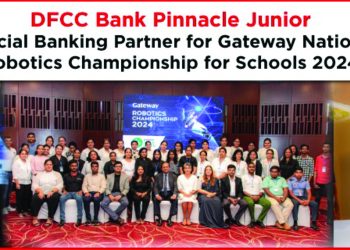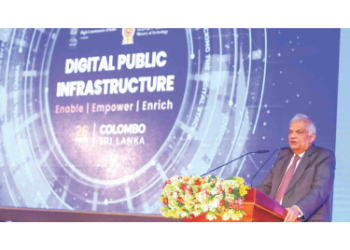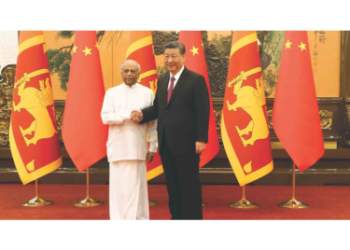Nishelli Perera co-founded a home-grown nutraceutical company driven by science-based innovation. In 2016, she and her business partner, Dr. Dilshan Balasuriya, launched YETI, a range of isotonic beverages in Sri Lanka. She fuses many experiences, her childhood growing amid extended family members heavily into entrepreneurship, higher education in the United States, and navigating two different work cultures on two continents. Nishelli is a trailblazer, passionate about innovation and change. Fearless and a risk-taker, she thrives on the strength of innovation for business growth. Speaking to Business Today, Nishelli told us the story of her journey to creating a remarkable start-up that has grown amid varying circumstances.
Words Jennifer Paldano Goonewardane.
Photography Sujith Heenatigala and Dinesh Fernando.
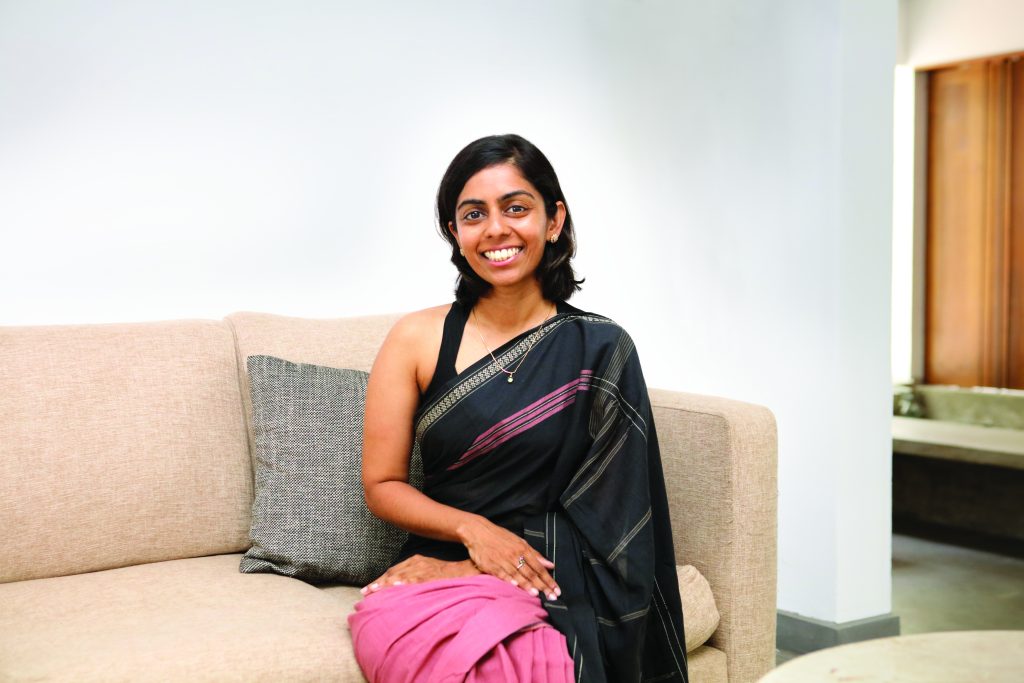
Nishelli Perera
The start-up ecosystem has a widespread presence globally, and we see the same in Sri Lanka, where many young people use their training, education, skills, and technology to challenge traditional business norms. What was your inspiration, the confidence, and family support?
My parents aren’t business people, but I spent a considerable amount of time during my childhood in Matara with my maternal grandparents, who were in business. I watched them build and manage businesses. My grandmother was a teacher by profession, but by the time I was born, she had retired and was running businesses. My grandfather was instrumental in building the Harischandra Mills, a household Sri Lankan brand. By the time I was born, he had also retired from Harischandra and was running smaller enterprises. I was constantly around this environment where businesses were at the inception stage. I used to potter around them, which allowed me to be part of their work life, and that experience while growing up gave me the confidence that I could do something on my own. I believed I could be successful if I had one per cent of my grandparents’ talent and tenacity. Their presence in my life was a massive inspiration for me to pursue business.
What was your journey to becoming an entrepreneur?
I graduated from the University of North Texas with my bachelor’s in economics and master’s in economic research. Upon graduating, I worked for a data analytics company in Texas where I built econometric models for retailers, hospitals, and private equity clients. At that time, I strongly felt the desire to contribute to the Sri Lankan economy, prompting my return to Sri Lanka. Upon returning, I worked as Head of Strategy at a leading pharmaceutical manufacturing company. In 2016, I met Dr. Dilshan Balasuriya, who had recently completed his PhD in neuropharmacology at the University of Cambridge. We both had a desire to create innovative Sri Lankan products at a global standard, backed by science. After a few initial brainstorming sessions, we came up with the idea for the isotonic energy drink. We named our product Yeti (after the mythical creature in the Himalayan region). We made the risky decision to quit our jobs and sank our life savings to open our first GMP certified manufacturing plant and R&D labs. We set up island-wide distribution and used unconventional marketing tactics to make Yeti a household brand in a short time span on a shoe-string budget.
How do you see Sri Lanka moving forward on enabling innovation, given the landscape that we are in right now?
Sri Lanka has a unique set of strengths and challenges in innovation. For us, Sri Lanka has proven to be an excellent test market for new products and ideas. The relatively small size of the country presents a golden opportunity for entrepreneurs to experiment with innovative concepts. Sri Lankan consumers are inherently curious and open to trying new things, and the country’s tight-knit social fabric allows ideas to spread rapidly through channels like social media.
However, when we look at the corporate sector, there’s a noticeable gap in innovation. While innovation is often discussed, it’s more of a buzzword than a tangible reality in Sri Lanka. This presents a clear opportunity for improvement.
I am pinning my hope on the newer generation to shift gears. We’re witnessing a growing trend among young people who are bypassing traditional career paths after school and diving into entrepreneurial ventures or side projects. While there’s undoubtedly room for greater innovation on a national scale, the creativity and fresh perspectives brought by the younger generation are incredibly promising. They’re not just mirroring global trends; they’re injecting unique Sri Lankan flavors into the global innovation landscape, and that’s something truly exciting.
Given the ground reality in Sri Lanka, a slowness to spur innovation in companies while innovation is encouraged at the undergraduate level, what route should young people who want to venture into the start-up ecosystem follow?
It is essential to work for an established organization in Sri Lanka, at least briefly. It helps us understand the niceties of working in a traditional structure that is unique to us. It might be challenging to plunge into a start-up straight out of university because, in Sri Lanka, an individual needs more than intelligence alone to run a business. Your network of contacts spurs part of business success. By working for an established organization, we learn to navigate the Sri Lankan business environment and get acquainted with that culture, an opportunity to learn the hard way of getting things done, and honing one’s skills of navigating the system, the establishment, and the people. In a Sri Lankan environment, ninety percent of one’s job is to learn how to navigate people. As a very rational person, that was a skill that I had to learn. Logic and research-based evidence work suits a country like America. In Sri Lanka, one must know how to get along with people to get your job done.
Once you learn to operate in the Sri Lankan ecosystem, I encourage people to explore their ideas and not be afraid to take risks. You can fail. But fail fast and fail cheaply. I advise a start-up to plow in their investment rather than from outside. Always start small and be tenacious about the project. When my business partner and I ventured into nutraceuticals, we invested all our savings into our idea and started small. We designed the machinery and hired undergraduates to help us build them for our factory, and as we grew, we reinvested the revenue to grow further. We have yet to take loans or seek external investment to grow the business. We have focused on growing steadily and slowly. I receive much flak from my business acquaintances for rejecting external funding to grow our business faster. We are cautious. We believe in operating within our means.
Have you addressed the issue of sustainability surrounding your products’ packaging?
Absolutely. From day one, we explored all the options of offering our product in cans, glass bottles, or plastic containers.
Glass bottles and cans are recyclable, but plastic isn’t. That plunged us into a dilemma as we focused on pitching our product to sportspeople unwilling to take beverages in glass or cans to the field. Plastic was their preference. Given that problem, we had to opt for recyclable plastic. We recycle our PET bottles through Beira Holdings, a company that recycles high-grade plastic into apparel material. They create clothing material from our bottles, which Sri Lanka’s leading apparel manufacturers use.
Our mission from inception was to create a Sri Lankan product with global standards in research, manufacturing process, and ingredients. Our goal was to take a Sri Lankan product to the worldwide market.
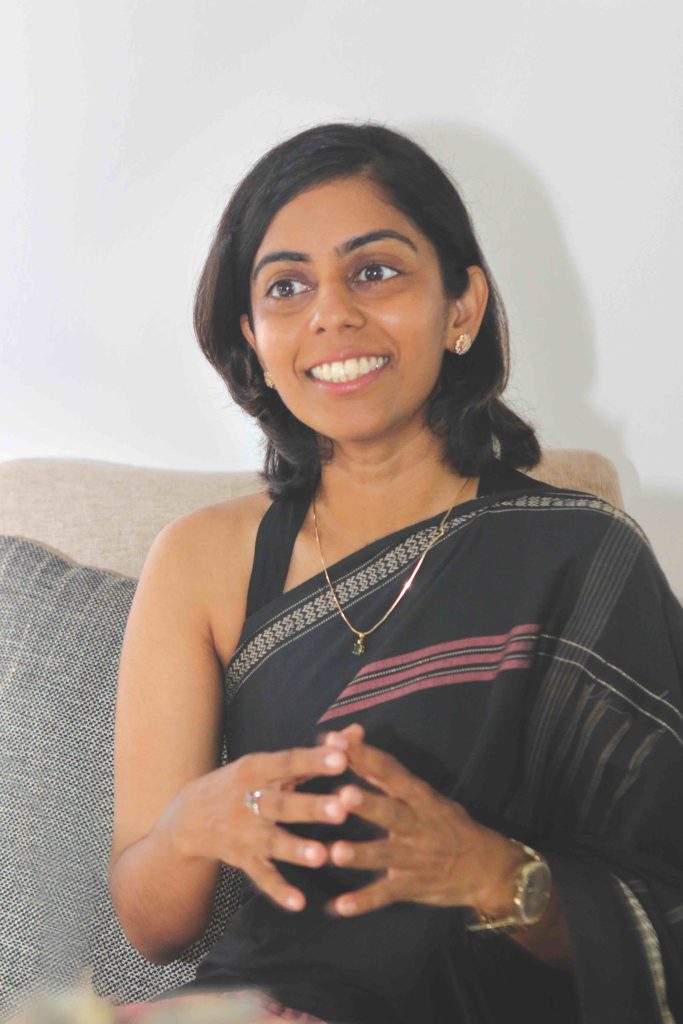
You are a start-up operating in an environment where larger companies with capital can enter your business. What are your plans for ensuring the long-term sustainability of your business, and where do you want your business to be?
My business partner and I spend very little time worrying about our local competition. Instead, our focus is on how we can take a great Sri Lankan product to the global market. Something that upsets and frustrates me is that people always think anything made in Sri Lanka is below standard. But we are a country that can boast of a built environment tracing back thousands of years of remarkable irrigation systems, astounding edifices, and great strides in indigenous medicine. Are we saying that the people who once made such unique innovations can no longer do the same today? Our mission from inception was to create a Sri Lankan product with global standards in research, manufacturing process, and ingredients. Our goal was to take a Sri Lankan product to the worldwide market.
We are still operating in the domestic market while trying to build the business further. But our long-term goal goes beyond that. Therefore, we are not concerned about the more prominent players in the segment. We are running our business on tunnel vision, solely focused on putting Sri Lanka on the map for nutraceutical innovation.
Did you do any market research into this area?
I understood the nutraceutical and pharmaceutical space, having worked in it here. However, we didn’t have to commission significant research because there was a gaping hole in the market for a high-standard sports nutrition company and products. We started with the entry-level product of isotonic drinks, from which we moved on to manufacturing vitamin-based products, pre-workout powders, collagen, and whey protein. In eight years, we have launched thirty-five products. Our goal is to ensure that every sportsperson in Sri Lanka has access to affordable nutritional products.
Regarding visibility, what packaging and marketing campaign did you adopt?
When we launched YETI, our entire investment was channeled into product R&D and establishing a GMP certified factory. With minimal funds remaining for a grand launch or extensive marketing campaign, we had to get creative to stand out in a crowded beverage market. We devised two strategies: first, crafting eye-catching packaging designed to grab consumers’ attention on the shelf; second, employing a low-cost grassroots approach to reach our target market. For packaging, we opted for a unique dumbbell-shaped bottle, aiming to convey the product’s suitability for athletes and fitness enthusiasts without relying on costly TV or radio ads. Additionally, we chose to debut our flagship product in a bold blue colour to emphasize its hydration benefits. Despite initial skepticism from some business leaders who doubted Sri Lankans’ willingness to try a blue drink and supermarkets’ willingness to stock a non-traditional bottle shape, we stuck to our decisions. The overwhelmingly positive response from young athletes and fitness enthusiasts across Sri Lanka upon launch affirmed our decision and gave us confidence to further pursue unconventional ideas.
As for marketing, we embraced a grassroots approach, actively participating in small sports events nationwide. Recognizing the disparity in sports funding, which tends to be Colombo centric and favours sports like cricket and rugby, we aimed to provide equal attention to athletes in all regions. By engaging with schools and national sporting events outside the capital, we ensured these athletes received the sports nutrition they deserved. This targeted approach effectively introduced our product to the right audience and contributed to its success in the market.
Given that strategy, will it not impact your ROI?
For my business partner and I, creating a great Sri Lankan product at an affordable price is extremely important. The ROI has been of secondary concern.
What is the workforce strength?
We started with five manufacturing and quality-assurance staff members, including two graduates qualified in food science and three non-executive manufacturing staff. Today, we have nearly forty. But initially, my business partner and I did almost all of the work, driving in my car and his jeep delivering products to gyms and sporting events, handling sales, marketing, and administrative work until we were able to hire staff to handle sales and the finance aspect of the business.
What space do we have in Sri Lanka to invest in R&D, especially for start-ups with great energy to embrace change?
The only way to drive R&D in Sri Lanka is to partner with people outside Sri Lanka, which we are doing right now. We have hired several undergraduates from local universities to help with R&D. However, since we lack access to cutting-edge activities in the rest of the world, we have partners specializing in food science, innovation, and machinery in Germany, Austria, India, and China to help us access information on new global trends. Such partnerships are essential to drive innovation.
Would you advise young people brimming with ideas to work for a start-up?
There’s an excellent reason why young people should choose to work for start-ups. Large organizations can be confining because of the specific roles assigned to individuals. But a start-up allows you to experience and be involved in the entire gamut of operations. I guarantee that anyone who has worked with our company for several years will have a well-rounded experience of all the business aspects. For instance, a young person who applied for a role in microbiology showed a great aptitude for business development. We switched her role and saw her thrive and succeed!
Start-ups are a fantastic place to get exposure to various roles, new ideas, and product offerings that demand innovation. Start-ups are fast on ideas and bring those ideas to fruition soon, which we do in two months.
You have studied and worked abroad. What are the key differences between the two systems?
People in Sri Lanka are unwilling to go beyond our dedicated functions to learn anything extra. As an employer, I’ve seen people’s reluctance to take risks and do something beyond their assigned roles unless instructed by a boss. People are unwilling to think on their own and solve problems. I would love to see more young people be dynamic in the workplace and intrepid explorers of new ideas. I hope the newer generation joining the workforce will break the traditional Sri Lankan business culture, and I am excited to see what happens in Sri Lanka in the next fifteen years.
We must take pride in being Sri Lankan, realize our potential, and fearlessly take our ideas and products to a global market. Sri Lanka is a fantastic place for entrepreneurs because of its small market, and it is an ideal test market for home-grown products that could eventually go global.
Is it also advantageous to have that additional exposure studying overseas?
Yes. I was fortunate to have had the opportunity to study in the US. When I was 18, I told my father I wanted to study in the US. He said, well, I have 125 dollars; what can you do with it? It was apparent that I needed funding to enter a foreign university. So, I chose to enroll at a community college, which was affordable. But many people helped me. My grandmother bought me a plane ticket while an aunt allowed me to stay with her until I could support myself. I did multiple jobs and still managed to ace my exams, earning me a scholarship to pursue undergraduate and later postgraduate studies.
Having done them the hard way, I have a great deal of gratitude for my education. People should never give up on the dream of studying abroad just because they don’t have funds. Overseas exposure is beneficial because it exposes us to a different worldview and way of working. Still, anyone who doesn’t get that opportunity shouldn’t have a chip on their shoulders because the education in Sri Lanka is good enough. Education isn’t the only way to get overseas exposure – you can gain exposure throughout your career about work ethic and work culture in other countries.
Speaking of your business partner, you have built the business in eight years. To do that, you have to have a degree of complementarity. So, how does that dynamic work?
It was a leap of faith when we started the business since we didn’t know each other very well. Our success is nothing short of a miracle. We brought different skill sets. I was a partner with business acumen and was good at strategy, numbers, and logic. He possessed robust scientific thinking and creativity. Together, we had a perfect balance of science, business, strategy, and creativity and a willingness for risk-taking that enabled us to push the organization forward.
Interestingly, over time, our roles have evolved. We have complemented each other well enough to learn each other’s roles. Today, I am fully involved in the R&D process while Dilshan is engaged in sales, marketing, and business.
What is the long-term vision for the business?
Up to now, we have been using global ingredients and creating products for Sri Lankans. But now, we’re ready to flip the script. We’re dreaming of a future where we harness the incredible richness of Sri Lankan ingredients to create products that will captivate people all around the globe. It’s not just about business; it’s about sharing the heritage of our beautiful island with the world.


